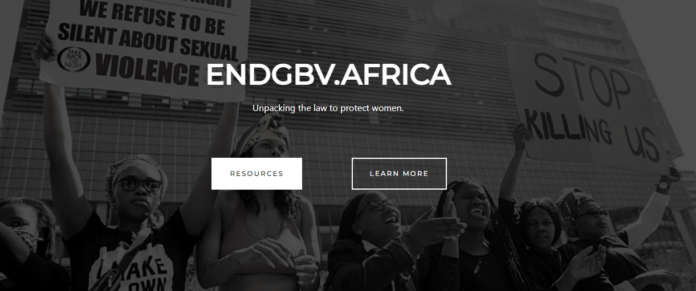Endgbv.africa is a new resource that was created to monitor countries’ responses to gender-based violence (GBV). The resource is meant to identify gaps in laws and policy and once that has been done, advocate for change. The resource currently has five countries: South Africa, Zambia, Malawi, Mozambique and Zimbabwe. The Daily Vox team spoke to S’lindile Khumalo, an advisor at ALT Advisory who launched the resource.
The online resource contains the laws and policies of the different countries. It uses the internationally recognised standards and sees how the countries’ align to these standards. Additionally the resource has a terminology page. This gives the user insights into commonly used terms. There are 15 different languages that users can use to navigate the resource. Importantly, the resource has resources and hotlines that survivors and victims can use.
RELATED:
Explained: the gender-based violence laws in South Africa
Why was Endgbv.africa created? The inspiration behind putting the resource together?
EndGBV.africa was born out of a need to understand what measures, if any, were taken by African governments to protect women as movement restrictions were placed to curb the spread of COVID-19. Studies show that once the pandemic began, global GBV rates increased substantially. We wanted to understand the circumstances closer to home so we created this site to assess the state of affairs in Africa. Unfortunately, during this time, GBV has been described as a secondary pandemic. In our view, it is more than that – this is a crisis that deserves our fullest attention and our concerted efforts. Although we have some way to go, we would like to ultimately see the end of gender-based violence in our lifetime.
What kind of resource is it? How is it intended to be used?
We were quite deliberate in creating a portal that is simple to navigate – we wanted it to be accessible and valuable to survivors, researchers, civil society, etc. The main feature of the site has to be the country-specific factsheets which outline information such as the State bodies tasked with tackling GBV, government responses to GBV perpetrated on- and offline, as well as the relevant domestic legislation and policy. In the factsheets, one can access contact details of state actors and NGOs that may provide further support. Based on what we found, each country was assigned a colour – red, amber, or green – to indicate the level of responsiveness by the government to GBV during the pandemic.
Further, the site has a terminology page which we will continue to update as language around this subject evolves. We have also included a law and policy page which tracks various States’ obligations to the applicable international and regional anti-GBV instruments.
What does the site hope to do?
The site is intended to share information. In time, we hope to lobby for change by partnering with different organisations across the continent to ensure that the fight against GBV remains a priority and that different stakeholders play their part.
RELATED:
The Construction Of Masculinities, The Rule Of Law And Gender-Based Violence
What work went into it?
As a team, we spent months focusing squarely on research. Surprisingly, ascertaining different States’ responses to COVID-19 beyond just lockdown measures was a rather difficult exercise – we found the gaps in data disheartening. Following the research phase, the ALT Advisory Design team then spent a further few months on web design. This aspect of the project entailed in-depth discussions and debates about imagery, messaging, and the like
What kind of improvements/changes are being planned for the future?
Presently, the site contains factsheets on Malawi, Mozambique, South Africa, Zambia, and Zimbabwe. We are already developing factsheets for additional countries.
For whom is the resource?
On the home page, we have indicated that the site seeks to unpack the law to protect women. Broadly speaking, the site is for anyone who is affected by GBV or who supports the fight against it. The goal is to enable and empower.
What did you hope to achieve with it?
Our hope is that we can create positive change in the law and beyond. We have a vision for this project to become more than just a website, but a movement across Africa. This is just the beginning.









